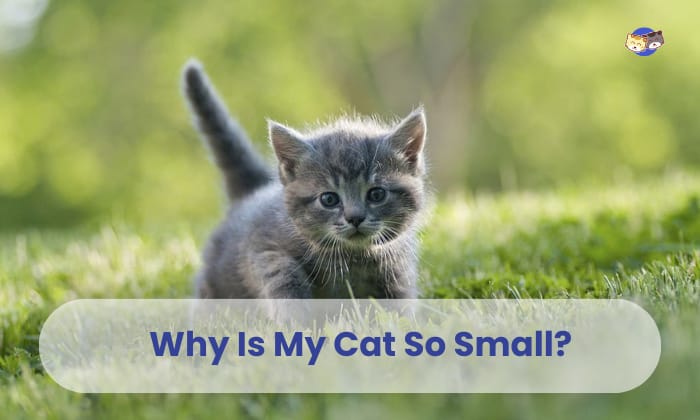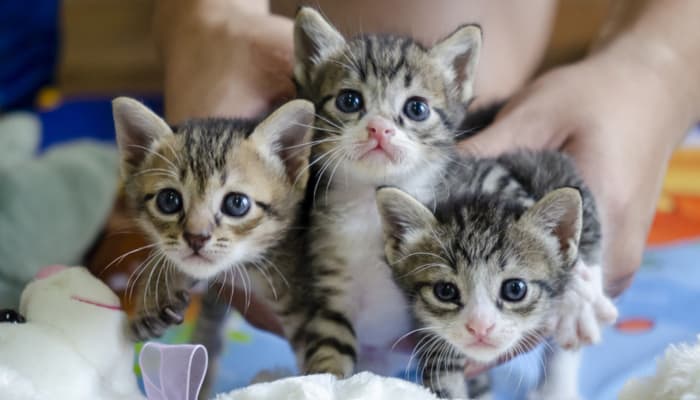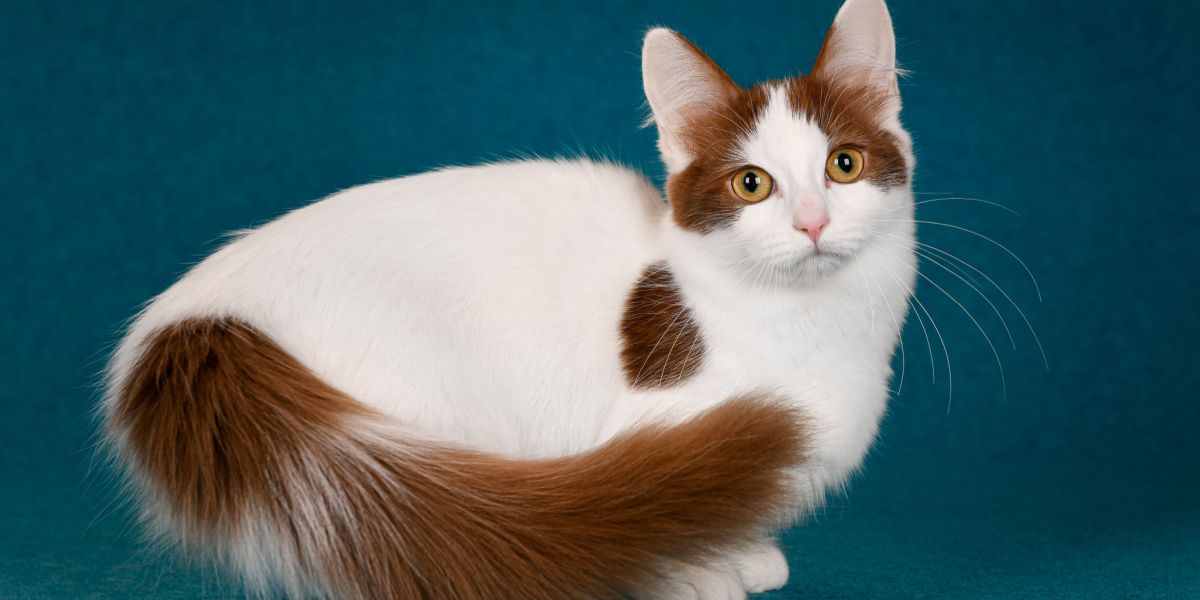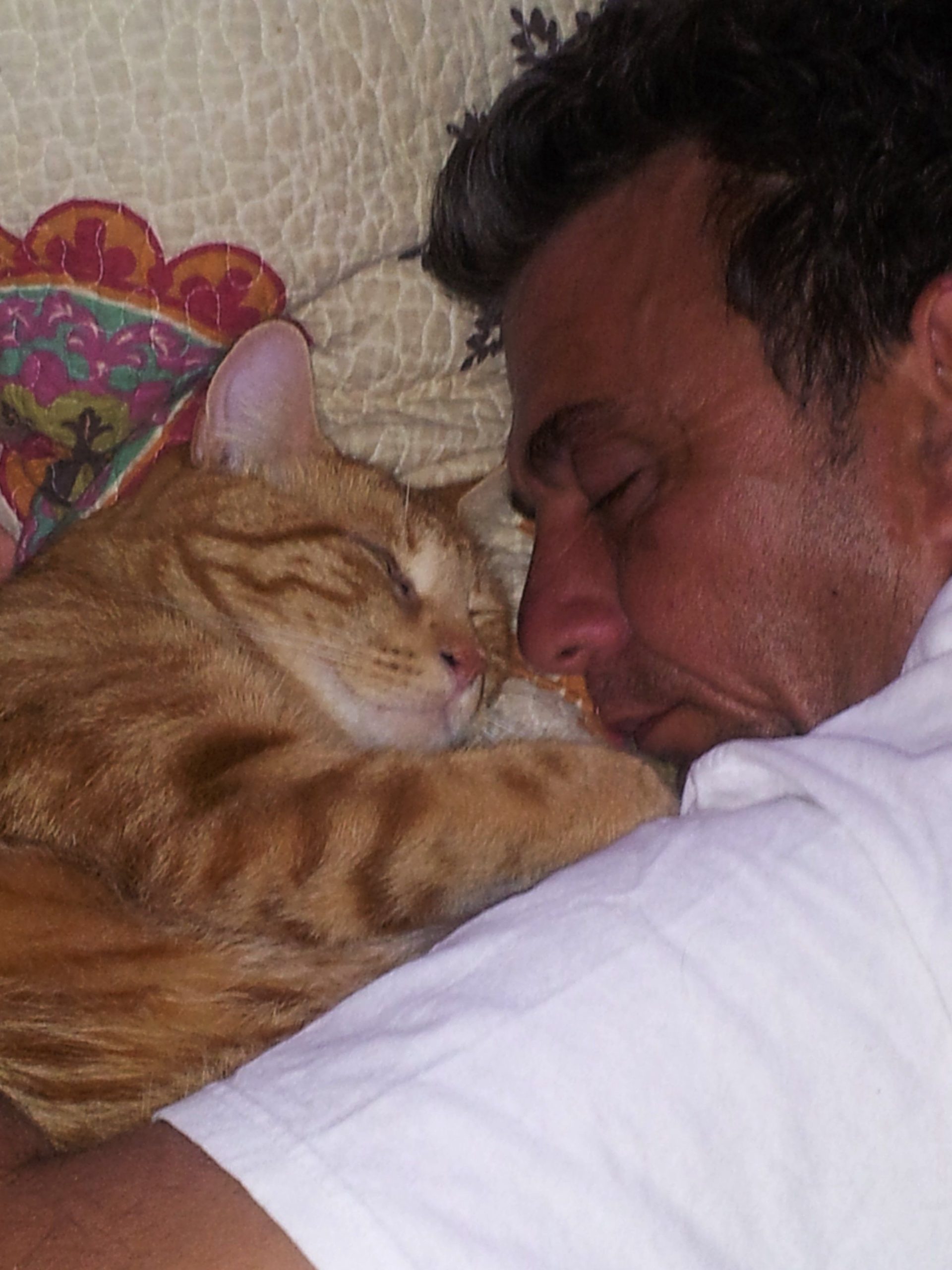Contents
- I. Introduction
- II. Understanding the Persian Cat Breed
- III. Common Characteristics of Persian Cats
- IV. Factors Affecting the Size of Persian Cats
- V. Health and Nutrition of Persian Cats
- VI. Routine Care and Exercise for Persian Cats
- VII. Frequently Asked Questions
- 1. Why is my Persian cat smaller than other cats?
- 2. Should I be concerned if my Persian cat is small?
- 3. Can I do anything to help my Persian cat grow larger?
- 4. Are Persian cats more prone to being small?
- 5. Can a Persian cat’s size change as it grows older?
- 6. Are there any health concerns associated with smaller Persian cats?
- 7. Can I breed my smaller Persian cat?
- 8. How can I ensure my smaller Persian cat is happy and comfortable?
I. Introduction

Welcome to the fascinating world of Persian cats! These adorable feline companions are known for their luxurious long fur, expressive eyes, and gentle nature. However, you may have noticed that your Persian cat is smaller in size compared to other breeds. In this article, we will explore the various reasons why your Persian cat may appear smaller and provide insights into this unique characteristic.
It’s important to note that Persian cats come in different sizes, and not all of them are small. However, if your Persian cat falls on the smaller end of the spectrum, there are several factors that could contribute to its size. Let’s delve into these reasons in more detail.
1. Genetics
Genetics play a significant role in determining the size of your Persian cat. Their petite stature can be attributed to specific genes that have been passed down through generations. If your cat’s parents or ancestors were smaller in size, it’s likely that your Persian cat has inherited these traits.
2. Breeding Practices
Breeding practices can also influence the size of Persian cats. Some breeders focus on creating smaller-sized Persians by selectively breeding cats with petite characteristics. These breeding techniques aim to produce what is known as a “teacup” Persian, which is a smaller version of the breed.
3. Health and Nutrition
A cat’s health and nutrition are vital factors that contribute to its size. If your Persian cat is not receiving a balanced diet or is experiencing health issues, it may affect its growth and development. Regular veterinary check-ups and a nutritious diet tailored to your cat’s needs are essential to ensure optimal growth.
4. Age and Development
Like humans, cats go through various growth stages. If your Persian cat is still young, it’s possible that it hasn’t reached its full size yet. Cats typically reach their adult size between the ages of one to two years. So, if your Persian cat is still a kitten, it may simply need more time to grow.
5. Environmental Factors
The environment in which your Persian cat lives can also impact its size. Factors such as living space, exercise opportunities, and stress levels can influence a cat’s overall growth. Providing a stimulating and stress-free environment can contribute to the healthy development of your Persian cat.
II. Understanding the Persian Cat Breed

The Persian cat breed is known for its exquisite beauty and luxurious appearance. Characterized by its long flowing coat, brachycephalic (flat) face, and round expressive eyes, the Persian cat is undoubtedly one of the most popular breeds around the world. However, there is more to this breed than just its stunning looks. In this section, we will delve deeper into the characteristics and traits that make the Persian cat so unique.
The Origin of Persian Cats
The Persian cat is believed to have originated in Persia (modern-day Iran) and has a long and rich history. It is believed that traders and explorers brought these feline beauties from Persia to Europe in the 17th century, where they quickly gained popularity among the nobility. Today, Persian cats are cherished by cat lovers worldwide.
Physical Appearance
The Persian cat is easily recognizable due to its distinct physical features. With a medium to large-sized body, a broad head, and a short, thick neck, these cats have a regal and graceful presence. They have a thick, dense coat that requires regular grooming to keep it in top shape. Persian cats come in a wide variety of colors, including solid, tabby, and colorpoint.
Temperament and Personality
Despite their glamorous appearance, Persian cats are known for their calm and gentle temperament. They are generally quiet and enjoy a relaxed lifestyle. Persian cats make wonderful companions as they are affectionate and love to be pampered. However, they can be a bit reserved around strangers and may take some time to warm up to new people.
Caring for Persian Cats
Due to their long and dense coats, Persian cats require regular grooming to prevent matting and tangles. Daily brushing is essential to keep their fur healthy and prevent hairballs. Additionally, their flat faces make them prone to certain health issues, such as breathing difficulties and eye problems, so regular check-ups with a veterinarian are crucial.
Interaction with Other Pets
Persian cats generally get along well with other pets, especially if they are introduced to them at a young age. They have a friendly and adaptable nature that enables them to form strong bonds with their furry companions. However, it’s important to monitor their interactions and ensure a gradual and supervised introduction when introducing them to other animals.
III. Common Characteristics of Persian Cats

Persian cats are known for their distinct appearance and gentle nature. They have several common characteristics that set them apart from other breeds. Here are some key features that make Persian cats unique:
1. Luxurious Coat
One of the most striking features of Persian cats is their long and luxurious coat. Their fur is thick, dense, and silky, requiring regular grooming to prevent matting. The coat comes in various colors and patterns, including solid, tabby, and color-point.
2. Flat Face and Round Eyes
Persian cats are easily recognizable by their flat faces and large, round eyes. The flat face, known as a brachycephalic trait, gives them a distinct appearance. Their eyes are typically expressive and can be found in shades of blue, green, copper, or odd-eyed.
3. Gentle and Calm Personality
Known for their calm and gentle nature, Persian cats make excellent companions. They are typically quiet and enjoy a peaceful environment. These cats are often content to laze around and be pampered, making them perfect for individuals or families looking for a low-energy pet.
4. Affectionate and Loyal
Persian cats are known for their affectionate nature and their loyalty to their owners. They form strong bonds with their human companions and enjoy being close to them. These cats thrive on love and attention and often seek out cuddles and affection from their owners.
5. Minimal Exercise Needs
Unlike some other breeds, Persian cats have minimal exercise needs. They are not particularly active and prefer a calm and relaxed lifestyle. A few play sessions and regular grooming are usually sufficient to keep them happy and healthy.
6. Health Concerns
Persian cats are prone to certain health issues due to their unique characteristics. Their flat faces can lead to respiratory problems and eye conditions. They are also prone to dental problems, so regular dental care is essential. It is important for Persian cat owners to be aware of these potential health concerns and provide proper care and veterinary attention.
IV. Factors Affecting the Size of Persian Cats

Persian cats are known for their luxurious coat and distinctive features, but their size can vary greatly. Several factors contribute to the size of Persian cats, including genetics, diet, exercise, and overall health.
1. Genetics
Genetics play a crucial role in determining the size of Persian cats. Breeding practices and the lineage of the cat can influence its size. Breeders select specific traits to enhance certain characteristics, including size. If both parents are small in size, there is a higher chance of their offspring being smaller as well.
2. Diet
Diet is another essential factor that affects the size of Persian cats. A balanced and nutritious diet is crucial for healthy growth and development. Feeding them high-quality cat food that is specifically formulated for their needs can ensure they receive the necessary nutrients for optimal growth. Overfeeding or underfeeding can lead to weight issues and affect their overall size.
3. Exercise
Regular exercise is essential to maintain a healthy weight and size for Persian cats. Engaging them in playtime activities and providing them with opportunities to be active can help prevent obesity and keep them fit. Cats that are more active tend to have a leaner and more muscular physique.
4. Overall Health
The overall health of a Persian cat can impact its size. Cats that have underlying health conditions or are prone to certain diseases may experience stunted growth or weight loss. Regular veterinary check-ups and proper medical care are vital to ensuring their well-being and maintaining an appropriate size.
5. Neutering or Spaying
Neutering or spaying can also affect the size of Persian cats. These procedures can alter their metabolism and hormonal balance, which can impact their growth. It is important to consult with a veterinarian to determine the appropriate time for these procedures, taking into consideration the individual cat’s size and development.
In conclusion, the size of Persian cats can be influenced by various factors such as genetics, diet, exercise, overall health, and neutering or spaying. Understanding these factors and providing the necessary care and attention can help maintain an ideal size for your beloved Persian cat.
V. Health and Nutrition of Persian Cats

Persian cats are known for their luxurious coats and adorable flat faces. However, these unique features can also make them prone to certain health issues, so it’s important to ensure they receive proper care and nutrition. Here are some key factors to consider when it comes to the health and nutrition of Persian cats:
Diet and Feeding
Feeding your Persian cat a balanced and nutritious diet is crucial for their overall health. It’s recommended to provide them with high-quality cat food specifically formulated for Persian cats. These foods usually have added nutrients that promote healthy skin, coat, and digestion. Additionally, it is important to provide a diet that is low in carbohydrates and high in protein to prevent weight gain.
Hydration
Persian cats have a thick double coat, which can cause them to become easily dehydrated. It’s essential to ensure they have access to fresh and clean water at all times. Some cats prefer running water, so using a cat water fountain can be a good option to encourage them to drink more.
Grooming
Persian cats require regular grooming to maintain the health of their coat. Their long hair is prone to matting and tangling, which can lead to discomfort and skin issues. Daily brushing is recommended to prevent this, and occasional baths may be necessary to keep their fur clean. Trimming their nails and cleaning their ears should also be a part of their regular grooming routine.
Eye Care
Persian cats have large, round eyes that are susceptible to certain eye conditions. Tear staining, corneal ulcers, and excessive tearing are common issues that may require special attention. Keeping their eyes clean and using veterinarian-approved eye drops or ointments can help prevent and manage these problems.
Regular Vet Check-ups
Regular visits to the veterinarian are crucial for the health and well-being of Persian cats. Routine check-ups, vaccinations, and preventive treatments for fleas, ticks, and worms are important to keep them protected. Your veterinarian can also provide advice on any specific health concerns related to Persian cats and offer guidance on nutrition and care.
By focusing on proper nutrition, grooming, and regular veterinary care, you can ensure that your Persian cat stays healthy and happy. Remember to provide them with a loving and safe environment, and they will reward you with their affectionate and gentle nature.
VI. Routine Care and Exercise for Persian Cats
Proper care and exercise are crucial for maintaining the health and well-being of your Persian cat. By following these guidelines, you can ensure that your furry friend stays happy and in optimal condition.
Daily Grooming
Persian cats have long, luxurious coats that require regular grooming to prevent matting and tangling. Set aside time each day to brush your Persian cat’s fur with a wide-toothed comb or a grooming brush specifically designed for long-haired cats. This will help remove loose hair and prevent the formation of knots. Additionally, regular grooming sessions provide an opportunity to bond with your pet and keep an eye out for any skin issues or abnormalities.
Eye and Ear Cleaning
Because of their unique facial structure, Persian cats are prone to eye and ear problems. Clean their eyes gently with a damp cotton ball or a soft cloth to remove any discharge or debris. Be cautious not to irritate their eyes or cause any discomfort. Similarly, check their ears regularly for wax buildup or signs of infection. Use a veterinarian-recommended ear cleaning solution and a cotton pad to gently clean the outer ear canal.
Nutritious Diet
A well-balanced diet is essential for the overall health of your Persian cat. Consult with your veterinarian to determine the specific nutritional needs of your feline friend. Provide them with high-quality cat food that is specially formulated for Persian cats, ensuring it contains adequate protein, vitamins, and minerals. Avoid overfeeding and offer a mix of wet and dry food to promote dental health and hydration.
Regular Veterinary Check-ups
Routine visits to the veterinarian are vital for ensuring your Persian cat’s well-being. Schedule regular check-ups to monitor their health and address any potential issues promptly. Vaccinations, deworming, and preventative treatments for fleas and ticks should be done as recommended by your veterinarian. Regular check-ups also provide an opportunity for dental examinations and professional teeth cleanings, as dental problems can be common in Persian cats.
Engaging Playtime
While Persian cats may not have the same level of energy as some other breeds, they still require regular exercise and mental stimulation. Engage your feline friend in play sessions using interactive toys, such as feather wands or laser pointers. These activities will help keep them mentally sharp and physically active. It is important to find a balance between playtime and rest, as Persian cats also enjoy their peaceful moments of relaxation.
By following these routine care and exercise guidelines, you can ensure that your Persian cat leads a healthy and fulfilling life. Remember to provide them with plenty of love, attention, and a safe environment to thrive in.
VII. Frequently Asked Questions
1. Why is my Persian cat smaller than other cats?
There can be various reasons why your Persian cat is smaller than other cats. Firstly, genetics play a significant role in determining the size of a cat, and it is possible that your cat has inherited genes that contribute to its smaller size. Additionally, the diet and nutrition of your cat can also impact its growth. Ensuring that your Persian cat receives a balanced and nutritious diet can help promote healthy growth.
2. Should I be concerned if my Persian cat is small?
While it is not uncommon for Persian cats to be smaller compared to other breeds, it is important to monitor your cat’s overall health and well-being. If your cat is consistently underweight or experiencing any other concerning symptoms, it is advisable to consult a veterinarian. They can assess your cat’s health and provide appropriate guidance.
3. Can I do anything to help my Persian cat grow larger?
While you cannot significantly alter your cat’s genetics, there are a few steps you can take to support its overall growth and development. Providing a balanced and high-quality diet, regular exercise, and ensuring a stress-free environment can contribute to your cat’s well-being. Additionally, regular veterinary check-ups can help identify any underlying health issues that may affect your cat’s growth.
4. Are Persian cats more prone to being small?
Persian cats, as a breed, are generally known for their smaller size compared to other breeds. This is due to their unique genetic makeup and specific breed characteristics. However, it is important to note that not all Persian cats will be small, as individual factors such as genetics and overall health also play a role.
5. Can a Persian cat’s size change as it grows older?
While cats generally reach their full adult size by the age of one, some Persian cats may continue to grow and develop until they are around two years old. During this time, it is possible for their size to change gradually. However, significant changes in size after this period are less likely.
6. Are there any health concerns associated with smaller Persian cats?
Smaller Persian cats are generally not inherently unhealthy. However, it is important to monitor their weight and overall health to ensure they are not underweight or experiencing any health issues. Regular visits to the veterinarian and maintaining a healthy diet will help keep your cat in optimal health.
7. Can I breed my smaller Persian cat?
If you are considering breeding your smaller Persian cat, it is crucial to consult with a reputable breeder or veterinarian. They can assess your cat’s suitability for breeding and provide guidance based on their health, genetics, and overall well-being.
8. How can I ensure my smaller Persian cat is happy and comfortable?
Creating a happy and comfortable environment for your smaller Persian cat involves providing them with proper nutrition, regular exercise, mental stimulation, and a safe space to relax and rest. Additionally, showering them with love, attention, and regular grooming sessions will contribute to their overall well-being and happiness.

Jackson is an accomplished content writer with a flair for captivating storytelling. With a Bachelor’s degree in English Literature from the prestigious University of California, Berkeley, Hunter’s educational background has honed his writing skills to perfection. His love for felines is evident in his extensive knowledge of cat behavior and care, making him an expert in the field. Hunter’s passion for cats has led him to contribute insightful articles to various online platforms, providing valuable information and tips to cat owners worldwide. With his exceptional writing abilities and deep understanding of cats, Hunter continues to create engaging content that resonates with readers and leaves a lasting impact.
